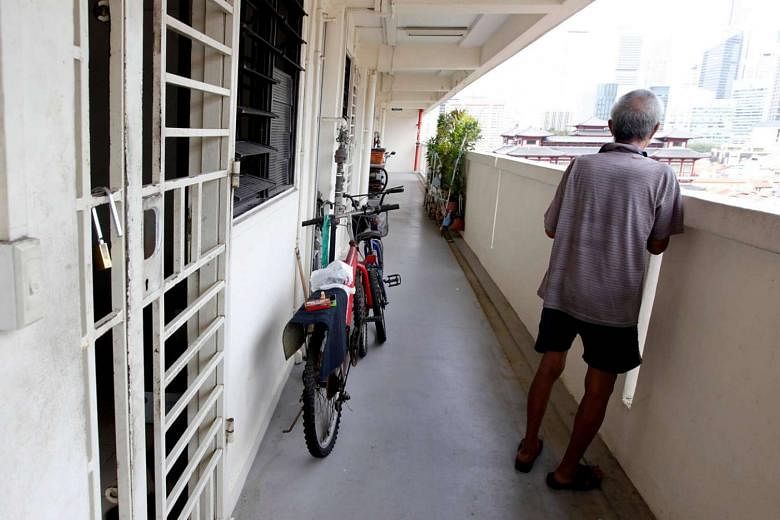Madam Tan Bon Aik, 83, spends most of her day at home alone watching television and doing housework.
Three years ago, however, a neighbour found her unconscious on the floor and called an ambulance. She had fallen after coming out of the toilet and sustained a broken hip.
To keep a closer eye on seniors like her, the Singapore Management University (SMU) has started a pilot project that hooks up 50 Housing Board flats in Marine Parade with sensors.
The settings on the devices are adjusted for different seniors, to cut down on false alarms.
For instance, if the sensors do not detect any movement in Madam Tan's flat for three hours, a staff member from the eldercare centre downstairs receives a phone alert and someone will check on her.
But for Madam Chan Soh Mui, 82, it takes six hours of inactivity to trigger the alert because she is more socially active. She goes to the nearby East Coast beach for a walk or qigong every morning.
"Some senior citizens are more mobile or social than others, so customising the alert thresholds allows for timely alerts during emergencies, yet cuts down on the number of false alarms," said SMU Associate Professor Tan Hwee Pink.
With an ageing population and a rising number of seniors who live alone, more people have been turning to some form of emergency alert or monitoring system to keep in contact with the elderly at home.
However, social workers say that false alarms are common because the call buttons are either triggered accidentally or the alert threshold for sensors is set too low.
False alarms are disruptive for the seniors and take up the time of those who go to check on them, said Mr Desmurn Lim, centre director at Montfort Care, a non-profit group which partnered SMU on this project.
"But set (the threshold) too high and some real emergency cases may be missed," he said.
So the research team from SMU decided to analyse data from five sensors installed in each flat - at the front door, kitchen, bedroom, bathroom and living room - and come up with an individualised alert threshold for each senior, depending on how active he or she is.
The initial generic threshold, since the project started in late 2014, was fixed at eight hours.
The team has set customised thresholds for 30 seniors so far this year.
While most elderly monitoring systems work by sending out alerts after detecting long periods of inactivity, the SMU pilot project goes one step further by analysing big data to highlight unusual patterns of behaviour over time that may signal a health or social issue.
For instance, if the motion sensor in the bathroom shows that the person has suddenly been going there very often, staff from Monfort Care will follow up as the person may have prostate problems.
The team has plans to take this project further.
It will be installing sensors in 20 flats in Bedok by year end that will not only be able to sense motion, but also temperature, humidity and lighting.
With more information garnered from the homes of the elderly, closer observations can be made to gauge their well-being, said Prof Tan.
He said the potential of such a smart home-tracking system for the elderly is huge if costs are kept down and caregivers understand how to use such technology.
The project is funded by the National Research Foundation and the seniors do not need to pay for the system now. It costs about $1,000 to install the various sensors in each flat.
Said Prof Tan: "Our people are getting older, yet caregiver support is inadequate. Technology has the potential to help caregivers deliver the same level of care with limited resources because data is able to reveal certain information that touch-and-go visits are not able to."
SEE EDUCATION B12


